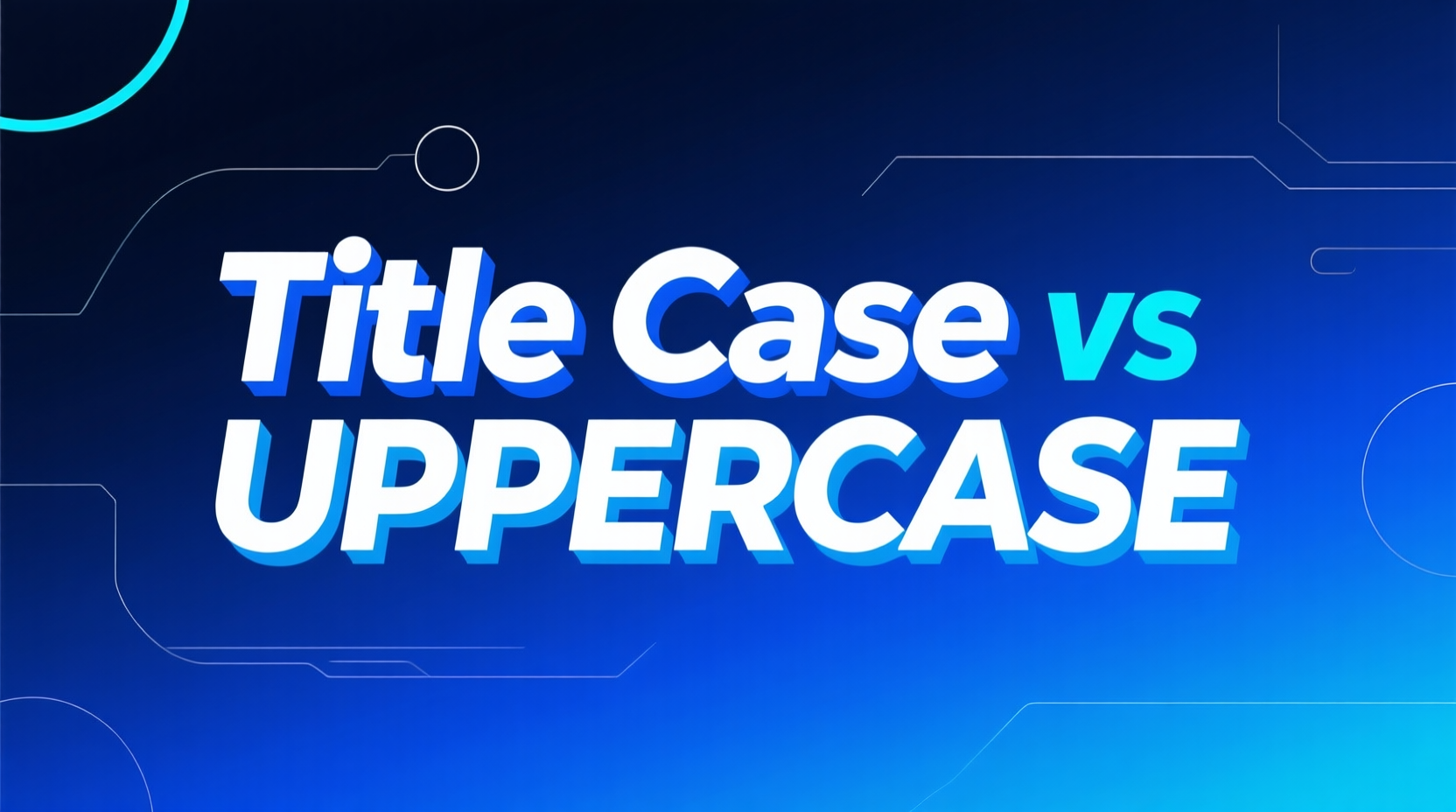
When formatting text, choosing between title case and UPPERCASE (all caps) can significantly impact readability, tone, and professionalism. While both styles use capital letters, they serve different purposes and follow distinct rules.
What Is Title Case?
Title case is a capitalization style where the first letter of major words is capitalized, while minor words (such as articles, conjunctions, and short prepositions) remain lowercase unless they appear at the beginning or end of a title.
Key Rules of Title Case:
- Capitalize the first and last word.
- Capitalize nouns, pronouns, verbs, adjectives, and adverbs.
- Lowercase articles (a, an, the), coordinating conjunctions (and, but, or), and short prepositions (in, on, at).
Common Uses of Title Case:
- Headings & Titles – Books, articles, blog posts, and research papers.
- Example: "The Quick Brown Fox Jumps Over the Lazy Dog"
- Branding & Product Names – Official names of products, movies, and songs.
- Example: "Harry Potter and the Sorcerer’s Stone"
- Formal Documents – Legal contracts, academic papers, and business reports.
- Example: "A Study on Climate Change Effects"
What Is UPPERCASE?
UPPERCASE (or "all caps") means every letter in a word or phrase is capitalized. Unlike title case, it does not follow grammatical rules—it simply converts all letters to their capital form.
Common Uses of UPPERCASE:
- Acronyms & Abbreviations – Shortened forms of organizations or technical terms.
- Example: "NASA, FBI, ASAP"
- Emphasis & Warnings – Used sparingly to draw attention.
- Example: "WARNING: HIGH VOLTAGE"
- Legal & Official Text – Some legal documents use all caps for names or key clauses.
- Example: "THE PARTIES AGREE TO THE FOLLOWING TERMS."
- Digital Design & Logos – Some brands use all caps for a bold, modern look.
- Example: "NETFLIX, IKEA"
When to Avoid UPPERCASE
- Long paragraphs – All-caps text is harder to read in bulk.
- Casual communication – Can come across as shouting in emails or messages.
- SEO & Web Content – Search engines and users prefer natural formatting.
Which Should You Use?
- Title Case → Best for professional, readable, and polished content (titles, headings, formal writing).
- UPPERCASE → Best for emphasis, abbreviations, and design elements (logos, warnings, acronyms).
Need to convert text quickly? Try our free tools:
- Title Case Converter – Automatically format any text into proper title case.
- Upper Case Converter – Instantly convert text to ALL CAPS.
Use these tools to ensure your writing follows the right capitalization style!